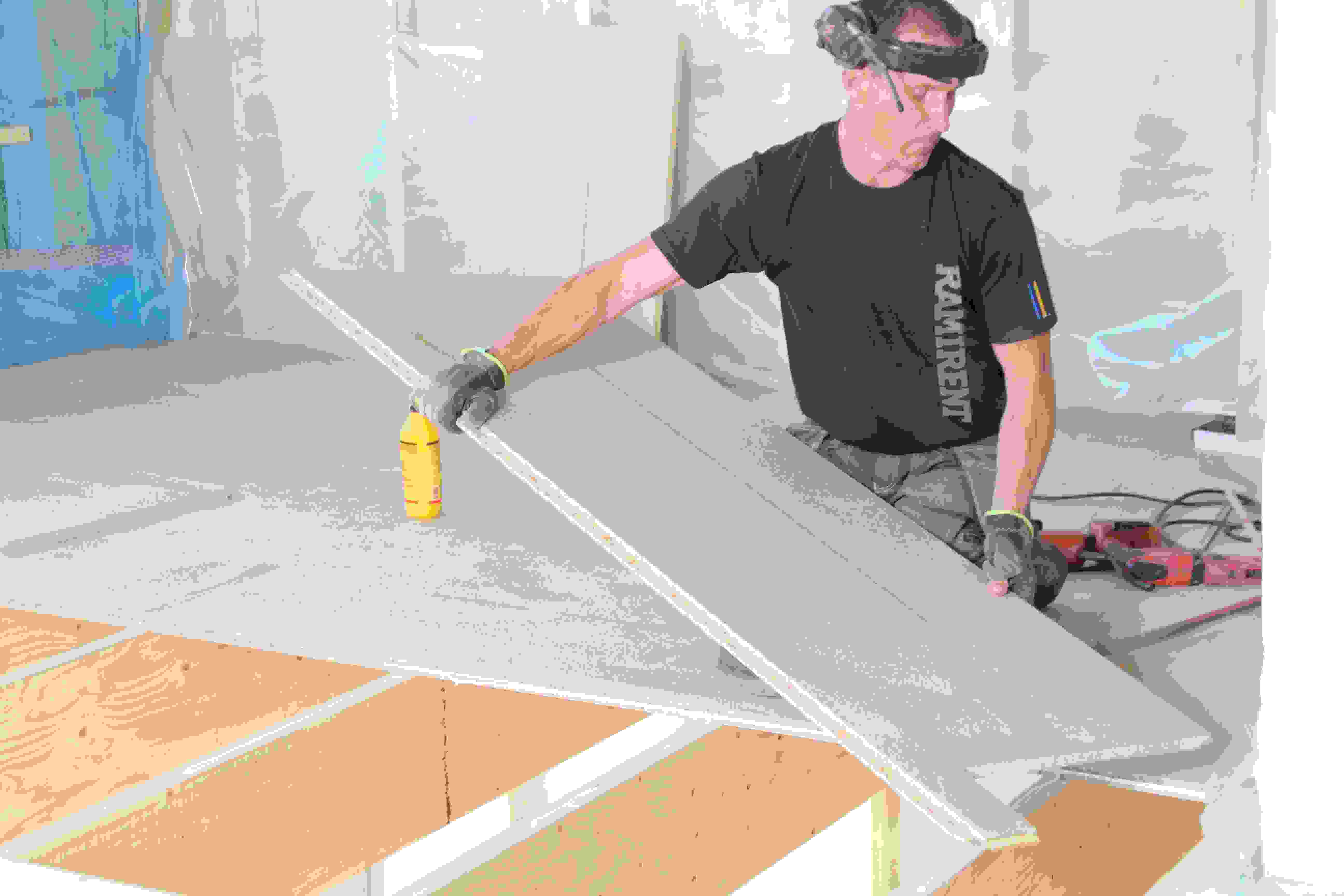Bearing floorboards
do it easy
It is recommended that joist layers should be sized in accordance with NBI’s Joisting Table for high rigidity. The Joisting Table for minimum rigidity should only be used in secondary spaces where there are reduced requirements for comfort. The joist layer must be levelled and carefully installed with exact centre-to-centre spacing. All free board and slab edges must be supported. Before embarking on installation, the site must be closed, ventilated and the heating functioning.
The boards must be installed in direct connection with the levelled joist layer with the stamped side up. The boards must be installed lengthwise on the joist layer. The boards are screwed or glued to the joists and glued at all joints. This makes the floor more rigid and reduces the risk of squeaking when the joists dry. The screws are sunk 2-3 mm into the board. Forestia 18 mm Floor requires the use of a rigid covering floor, such as a parquet floor.
Forestia Floor Standard P6
Areas of use: Forestia Standard Floor – dry rooms. Bearing underlay on wooden beams/floor battens and as
floating floors. (Climate class 1).
Forestia 22 and 18 mm Standard Floor delivered with tongue and groove on four sides, and are intended as
free bearing underlays on wooden beams or battens with c/c 0.6 m and as floating floors. Forestia Standard Floors
are installed in rooms where moisture resistant materials are not required.
Forestia 18 mm Floors are underlays which require a rigid top floor, such as parquet. The boards may not have a
humidity content of more than 10% before the top floor is laid.



